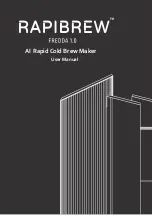
© National Instruments
|
7-5
Figure 7-6 shows an example of a buffered pulse-width measurement.
Figure 7-6.
Buffered Pulse-Width Measurement
Note that if you are using an external signal as the Source, at least one Source pulse should occur
between each active edge of the Gate signal. This condition ensures that correct values are
returned by the counter. If this condition is not met, consider using duplicate count prevention,
described in the
For information about connecting counter signals, refer to the
section.
Period Measurement
In period measurements, the counter measures a period on its Gate input signal after the counter
is armed. You can configure the counter to measure the period between two rising edges or
two falling edges of the Gate input signal.
You can route an internal or external periodic clock signal (with a known period) to the Source
input of the counter. The counter counts the number of rising (or falling) edges occurring on the
Source input between the two active edges of the Gate signal.
You can calculate the period of the Gate input by multiplying the period of the Source signal by
the number of edges returned by the counter.
Refer to the following sections for more information about M Series period measurement
options:
•
•
Single Period Measurement
With single period measurement, the counter counts the number of rising (or falling) edges on
the Source input occurring between two active edges of the Gate input. On the second active
edge of the Gate input, the counter stores the count in a hardware save register and ignores other
edges on the Gate and Source inputs. Software then reads the stored count.
S
OURCE
GATE
Co
u
nter V
a
l
u
e
B
u
ffer
1
0
3
3
2
2
1
2
3
3
2
Summary of Contents for PXI-6289
Page 1: ...PXI 6289...
















































